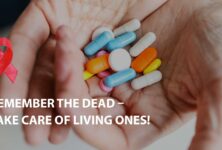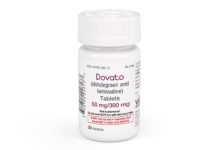Twenty funding requests yielded 32 grants
On 17 November 2017, the Global Fund Board approved grants worth $1.25 billion from the 2017-2019 allocations. The Board approved funding for 32 grants emanating from 20 funding requests submitted by 15 countries. Of the 20 funding requests, 14 were submitted in Window 1 (20 March) and four in Window 2 (23 May). The other two – from Myanmar – were labelled “early applicant” on the Global Fund’s Funding Request Status Tracker. (Myanmar was an early applicant for the 2014-2016 allocations.)
The Board was acting on the recommendations of the Technical Review Panel (TRP) and the Grant Approvals Committee (GAC).
This was the second batch of funding approvals in the 2017-2019 funding cycle. The $1.25 billion included five matching funds requests valued at $22.9 million. Interventions totaling $147.2 million were added to the Unfunded Quality Demand (UQD) Register. Domestic contributions to the programs represented by the approved grants amounted to $1.20 billion.
See the table for details.
As is customary, the approved funding is subject to availability of funding and will be committed in annual tranches. Where more than one grant has been approved for a component, the Secretariat has the authority to redistribute the approved amounts among the grants (except that any material change must be validated by the TRP).
Table: Grants approved from the 2017-2019 allocations – Second batch ($US)
| Applicant | Com- ponent |
Grant name | Principal recipient | Amount | UQD | Domestic commitment |
| Congo (DR) | TB/HIV | COD-C-CORDAID |
CORDAID
|
140,371,747
|
51,793,684
|
53,942,910
|
| HIV | COD-H-MOH |
Ministry of Health
|
22,777,439
|
53,892,320
|
||
| TB | COD-T-MOH |
Ministry of Health
|
16,186,215
|
50,590
|
||
| Malaria | COD-M-MOH |
Ministry of Health
|
46,639,215
|
1,058,201
|
||
| COD-M-PSI |
Pop. Serv. Intl.
|
166,827,623
|
||||
| COD-M-SANRU |
SANRU
|
134,184,185
|
||||
| Ethiopia | Malaria | ETH-M-FMOH |
Fed. Min. of Health
|
111,849,218
|
69,092,004
|
|
| Indonesia | Malaria | IDN-M-MOH |
Ministry of Health
|
44,574,010
|
4,550,000
|
64,810,579
|
| IDN-M-PERDHAK |
PERDHAKI
|
9,070,896
|
||||
| Iran | HIV | IRN-H-UNDP |
UNDP
|
10,687,693
|
392,953,533
|
|
| Moldova | TB/HIV | MDA-C-PCIMU |
Coord. Impl. & Mon. Unit
|
14,075,737
|
50,309,813
|
|
| TB | MDA-T-PAS |
C. for H. Pol./Studies
|
4,672,343
|
36,052,388
|
||
| Mongolia | TB | MNG-T-MOH |
Ministry of Health
|
7,244,359
|
758,604
|
15,817,213
|
| Myanmar | HIV | MMR-H-SCF |
Save the Children
|
52,943,765
|
50,163,664
|
53,800,000
|
| MMR-H-UNOPS |
UNOPS
|
77,067,074
|
||||
| TB | MMR-T-SCF |
Save the Children
|
16,760,483
|
60,800,000
|
||
| MMR-T-UNOPS |
UNOPS
|
77,281,372
|
||||
| Niger | HIV | NER-H-CISLS |
Coord.I-Sect. Lutte SIDA
|
15,802,629
|
14,766,633
|
|
| Sénégal | HIV | SEN-H-ANCS |
All. Nat. Comm. Santé
|
7,229,757
|
15,243,200
|
|
| SEN-H-CNLS |
Cons. Nat. Lutte SIDA
|
18,568,268
|
||||
| Sierra Leone | HIV | SLE-H-NAS |
Nat. AIDS Sect.
|
31,799,803
|
6,641,126
|
|
| Sudan | HIV | SDN-H-UNDP |
UNDP
|
16,578,954
|
9,547,285
|
|
| TB | SDN-T-UNDP |
UNDP
|
12,262,049
|
6,778,619
|
||
| Timor Leste | TB | TLS-T-MOH |
Ministry of Health
|
4,800,000
|
1,457,443
|
|
| Togo | HIV | TGO-H-PMT |
Min. of Finance
|
32,439,871
|
13,448,580
|
|
| TB | TGO-T-PMT |
AIDS Support Org.
|
1,934,000
|
943,760
|
||
| Malaria | TGO-M-PMT |
Min. of Finance
|
33,575,911
|
103,814
|
||
| Viet Nam | HIV | VNM-H-VAAC |
VN Auth. H/A Control
|
53,207,476
|
13,600,987
|
163,316,912
|
| VNM-H-VUSTA |
VN U. Sc. & Tech. Assoc.
|
6,499,966
|
||||
| TB | VNM-T-NTP |
Nat. TB Program
|
47,281,094
|
26,336,648
|
110,313,281
|
|
| Zanzibar | TB/HIV | QNB-C-MOH |
Ministry of Health
|
5,859,163
|
217,713
|
|
| Malaria | QNB-M-MOH |
Ministry of Health
|
5,134,807
|
71,892
|
Notes:
1. Amounts shown are upper ceilings.
2. For countries using euros, the amounts were converted to U.S. dollars at a rate of 1.1797 euros to the dollar.
3. Four components were also awarded matching funds (included in the amounts shown in Column 5): Myanmar HIV $3,509,098 (SCF) and $3,399,278 (UNOPS); Myanmar TB $11,094,352; Sierra Leone HIV $1,800,000; and Viet Nam HIV $3,070,833. Note that the amounts for Myanmar include RSSH matching funds in the amount of $1,702,728.
4. Final amounts for domestic commitments for Congo (DR), Niger and Sénégal are subject to confirmation.
Of the 20 funding requests, 13 were of the program continuation variety; five were full review and two were tailored.
The GAC said that the grants approved by the Board were found to be disbursement-ready by the Secretariat after a thorough review process and in consultation with partners. During grant-making, the GAC said, each applicant refined the grant documents, addressed issues raised by the TRP and GAC, and sought efficiencies where possible. The GAC endorsed the reinvestment of efficiencies in one of the following: (a) the same grant, in areas recommended by the TRP; (b) other disease components of the same applicant – where the TRP did not recommend reinvesting in the same grant; or (c) the general funding pool.
Most, if not all, of the approved grants had proposed start dates of 1 January 2018. As we reported in our article on the first batch of funding for 2017-2019, in the last funding cycle the average length of time from Board approval to first disbursement was about two months, although there was considerable variability: For some countries, the process took only a few weeks, while for others it took longer than two months. In some instances, therefore, it may be necessary for current grants that have end dates of 31 December 2017 to be extended.
More to come
There were 46 grants reviewed in the first batch of approvals, and 32 grants in this batch. At its meeting on 31 October – 1 November, the GAC was slated to review another 65 grants. A Board decision on these grants is expected on 1 December. The GAC met again on 21-22 November, where it was slated to review 22 grants; a decision on these grants is expected on 13 December. The GAC will meet one more time in 2017, on 6-7 December, where it is scheduled to review 14 grants; a decision on these grants is expected on 12 January 2018.
The grants that will be reviewed at these meetings will be from Windows 1, 2 and 3. Three more windows have been scheduled for 2018, as follows (with the TRP meeting dates shown in parentheses):
Window 4 – 7 February (TRP: 19-29 March)
Window 5 – 30 April (TRP: 3-11 June)
Window 6 – 6 August (TRP: 9-21 September)
GAC comments on individual grants
This section provides highlights from the GAC’s comments on selected components. See also a separate article in this issue on the GAC’s comments concerning the TB/HIV and malaria grants from the Democratic Republic of Congo.
Myanmar HIV and TB
The GAC acknowledged the progress accomplished through Myanmar’s HIV and TB programs in the last six years, as well as the ambitious targets set for the upcoming grants, including the potential achievement of universal antiretroviral (ARV) coverage by 2020. The GAC also acknowledged the progress in coordinating harm reduction activities in Kachin state, where HIV prevalence remains high, as well as in the states of Shan, Mon and Kayin.
The GAC discussed the complex political context affecting Rakhine state, particularly impacting the Rohingya population. The Global Fund does have access to the state of Rakhine and, over the years, has provided substantial funding through partners, including the central government. Given the higher TB burden and HIV prevalence documented in the conflict areas, the Secretariat has put in place mechanisms and partnerships with civil society and local authorities to ensure that the TB and HIV programs will continue to function in this complex operating environment.
Sénégal HIV
To meet its co-financing requirements, the Government of Sénégal needs to invest an additional € 13.0 million over and above what it spent in 2014-2016. The GAC said that the Secretariat has not yet received a letter of commitment from the appropriate ministers, and that the “indicative commitments” provided by the government fall short of the minimum required. This is partially due to the 8 September 2017 change in government, the GAC said. As a mitigation measure, the Secretariat will “efficiently and systematically” track domestic contributions.
Sudan HIV and TB
According to the GAC, the Global Fund–supported HIV program will focus on increasing the proportion of sex workers reporting the use of a condom with their most recent client from 34.9% in 2015 to 75% in 2020; increasing the proportion of people living with HIV who are screened for TB in HIV care or treatment settings from 96.6% in 2016 to 100% in 2020; and increasing the proportion of adults and children with HIV known to be on treatment 12 months after initiation of ARV therapy from 68.6% in 2015 to 90% by 2020.
Concerning TB, the GAC said the Sudan TB program aims to decrease the TB burden in line with the global End TB Strategy. The program plans to utilize community settings, NGOs and civil society organizations to improve the detection of TB cases and treatment outcomes; and plans to expand TB service provision to encompass a public-private mix.
The GAC noted that there will be a gradual transition away from the UNDP as the principal recipient (PR) towards national entity PR(s). The transition process will start in 2018 with the malaria grant and then continue with the TB grant during grant implementation. The TB and HIV grants were submitted individually in order to facilitate staggered transition from UNDP, building on lessons learned. The GAC said Global Fund grant funds should not be used to cover severance payments for UNDP employees.
The GAC recognized that the ongoing influx of refugees and the cross-border population dynamics may risk over-extending Sudan’s health system, and could impact the country’s TB disease profile. Although ongoing programmatic needs emerging from hosting refugees have been addressed through reprogramming of the grants from the 2014-2016 allocation, the GAC acknowledged that there is limited fiscal space in the grants from the 2017-2019 allocation to cover demand from this source. The GAC said that it welcomed Sudan’s plans to submit a prioritized above allocation request (PAAR), and it recommended that the Secretariat work with Sudan to explore the possibility of using emergency funding and other funding sources to address gaps.
Togo TB and HIV
While applauding the achievements of the existing TB grant, the GAC noted the persistent challenges with TB detection. In this regard, the GAC welcomed the strategies that Togo has introduced, including expansion of the use of the GeneXpert machines and increased community involvement aiming at contributing to active case funding.
The GAC also noted that the current level of funding will allow the existing number of people on ARV treatment to be maintained at its current level (60%, or 60,000 patients). Acknowledging the highly commoditized nature of the program (80% of the budget is allocated to health products), the GAC recognized challenges associated with the limited fiscal space for the scale up of ARV treatment. Togo plans to submit a PAAR outlining funding required to finance ARV scale-up for 18,691 people over the three years, to reach 67,031 patients in 2018, 73,112 in 2019, and 78,691 in 2020 (79% coverage).
Viet Nam HIV and TB
The HIV epidemic in Viet Nam is concentrated among people who inject drugs, men who have sex with men, and female sex workers and their sexual partners. The Global Fund’s HIV investments will strategically focus on providing prevention programs for key populations in 33 high- and moderate-burden provinces and cities; on strengthening community systems; and on removing legal barriers for access to services for key populations.
Global Fund–supported TB programs will invest in ensuring universal access to high quality diagnosis and treatment services by maintaining high levels of routine diagnosis and care, complemented by intensified and active case finding and appropriate treatment in risk groups and under-served populations; by providing routine diagnosis and effective treatment of latent TB infection for vulnerable and recently infected individuals; and by scaling-up access to diagnosis and treatment of multidrug-resistant and extensively drug-resistant TB, making optimal use of new tools, drugs and regimens, and patient support.
Concerning matching funds: Viet Nam was eligible for $3.1 million in matching funds for HIV key populations impact, and the country complied with the conditions for matching within the 2017-2019 allocation. However, due to overall paced reductions in the allocation and resulting budget constraints, the program was not able to demonstrate an increase in absolute terms in the amounts invested in key population programs in 2017-2019 compared to the 2014-2016 allocation period. (In order to qualify for the matching funds, countries have meet two conditions: (a) they have to devote in their allocated funding for 2017-2019 an amount at least equal to the amount of the matching funds award for the same priority area; and (b) they have to demonstrate that they are investing more in the relevant priority area in 2017-2019 compared to 2014-2016.) Nevertheless, the GAC said that Togo’s investment would achieve a catalytic effect given that it is covering the costs of health insurance for the most vulnerable HIV key populations with no access to services, as well as financing co-payments of ARVs. The GAC recommended that Togo receive the $3.1 million in matching funds (and the Board approved).
The GAC also noted the strong collaboration between the Global Fund–supported programs and the government, and coordination with in-country partners, especially with respect to ensuring the smooth transition of the programs supported by the U.S. Government. (PEPFAR is phasing out its support for HIV programs in Viet Nam; the PEPFAR programs are being absorbed by Viet Nam’s Social Health Insurance scheme.) The GAC cited the coordination as an example of best practice.
Most of the information for this article was taken from Board Document GF-B37-ER05, Report of the Secretariat’s Grant Approvals Committee. This document is not available on the Global Fund website.


 ПОИСК ПО САЙТУ
ПОИСК ПО САЙТУ  поиск по ресурсному центру
поиск по ресурсному центру 



